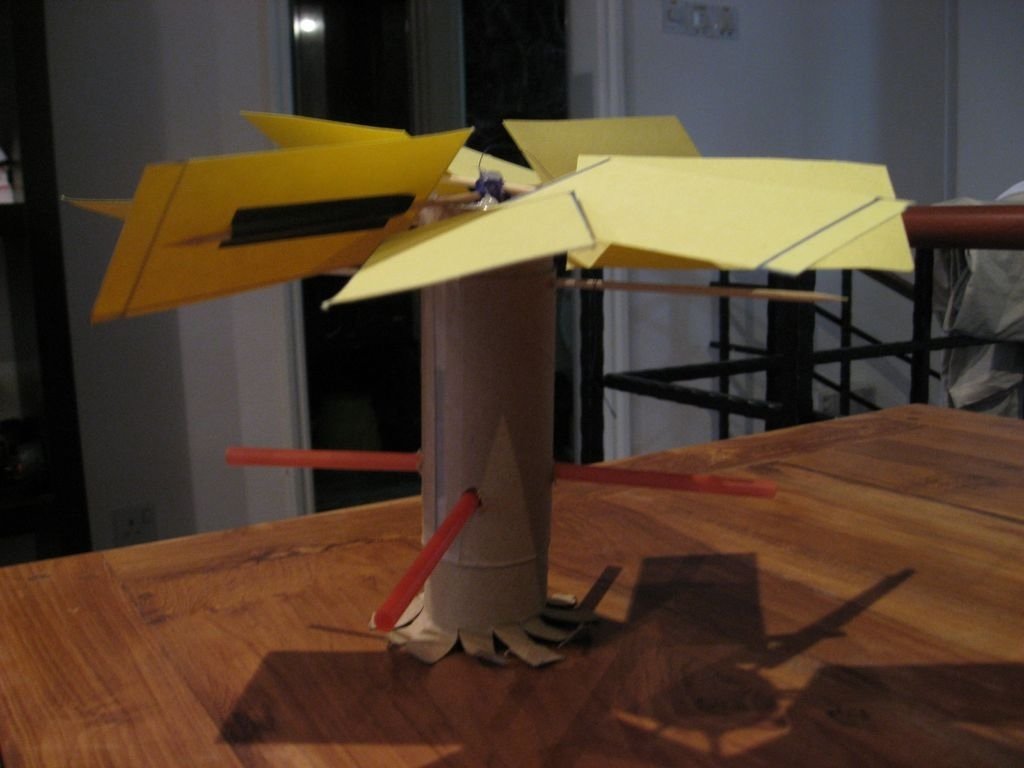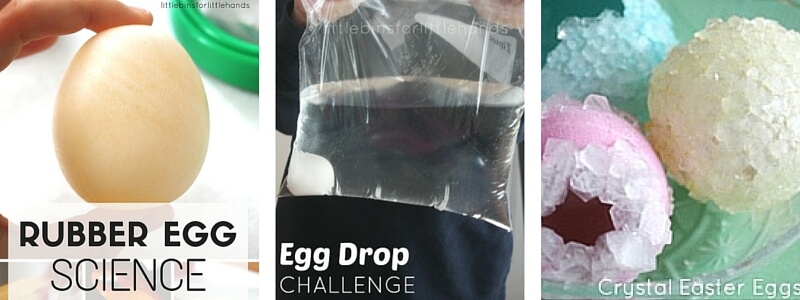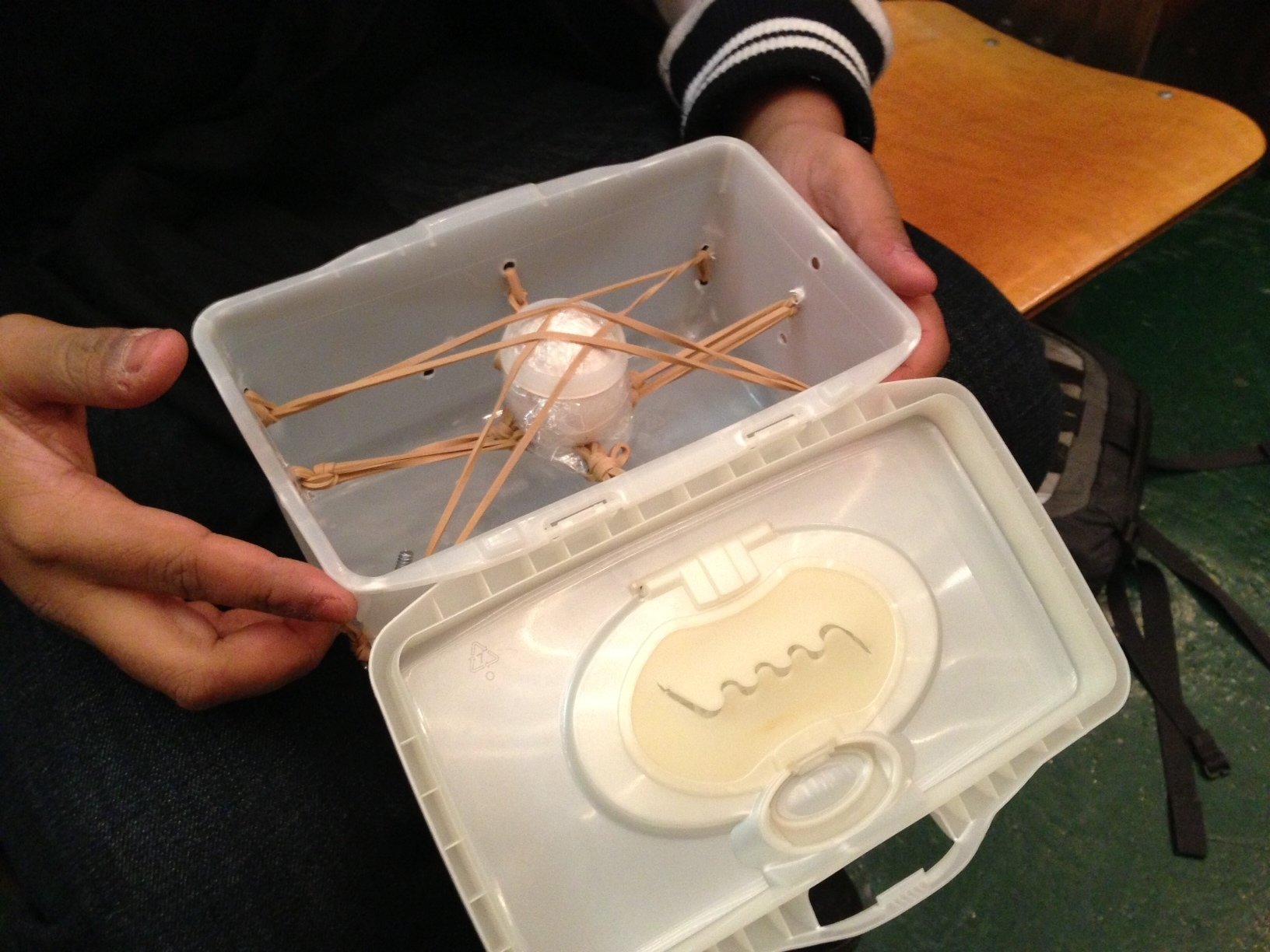38 rubber egg science project
Egg in Vinegar Science Experiment - How to Make a Bouncy Egg Write down your hypothesis (prediction) and then follow the steps below. Step 1 - Get a raw egg and carefully place it into a glass or jar. Then fill the glass with white vinegar until the egg is completely submerged. Step 2 - Leave the egg in the glass for 2-3 days. Each day, check back on the egg. How to Do the Bouncy Rainbow Rubber Eggs Experiment - STEAMsational Rubber Eggs Experiment Directions Fill each container about 1/2 full of vinegar. Add about 10 drops of food coloring to each jar. Carefully place a raw egg inside each jar. Let the eggs sit for about 48-72 hours in the vinegar. Try putting other eggs in different liquids to see if they produce a different or similar reaction.
Rubber Egg Experiment for Kids - Science Explorers After 24 hours, dump the first batch of vinegar and cover the egg with new vinegar. Let it sit for six more days. As the days pass, your kids will note how the shell dissolves, hence the nickname "naked egg" experiment. Remove the egg from the vinegar. While it has not been cooked, it will take on a rubbery feeling from the vinegar.

Rubber egg science project
Rubber Egg Experiment - The Science Spot Procedure: Put your raw egg into a tall drinking glass/jar. Pour vinegar into the glass until the egg is covered. Option to mix food coloring into the vinegar. Put the glass aside so no one drinks and/or spills it. Let the egg soak for 1 week. Make some observations of any changes during the week. Bouncing Rubber Egg - Naked Egg Science Experiment - YouTube Got an egg? Got vinegar? Turn a raw or boiled egg into a bouncy ball! The vinegar dissolves the eggshell, leaving you with the fibrous membrane around the eg... Rainbow Rubber Egg Science Experiment - Go Science Girls Let us see if we can make a rubber egg using these simple supplies. 1) Raw Eggs 2) Collect different kinds of solutions from the kitchen such as vinegar, corn syrup, coke, water, salt, and oil. 3) Containers (pick up either Clear cup or Mason jar because we wanted to be able to observe our eggs over the course of a week) 4) Food Coloring
Rubber egg science project. How To Make A Rubber Egg - Babble Dabble Do - Place an egg in a cup Place a raw egg carefully in a clear jar or cup. Add vinegar Pour enough vinegar in the cup to completely submerge the egg. Add food coloring Add in a few generous drops of food coloring and stir gently. To create Rainbow Rubber Eggs make a rubber egg for each color of the rainbow. Wait! Observe the eggs each day. Easy Rubber Egg Experiment - Nourishing My Scholar Easy Rubber Egg Experiment We decided to experiment with ingredients to see if we would still get the classic rubber egg. Here's what you'll need…. We gathered different solutions from our kitchen including: vinegar, Coke, corn syrup, salt water, and olive oil. Raw eggs (1 egg for each different solution that you use) Egg Protector Science Activity - ScienceWorks Sketch a few designs in your science journal. Then, start tinkering! To make th is project more challenging, set a time minute, say 15 minutes, to make your finished egg protector.. You can also make the project more challenging by limiting the supp lies you can use, or by limiting the weight of the final protector.. You may want to make several different variations of egg protectors and test ... Egg In Vinegar Experiment - Little Bins for Little Hands THE SCIENCE BEHIND THE EGG IN VINEGAR EXPERIMENT Eggshells get their hardness from a mineral called calcium carbonate similar to our bones. When you place the egg into the vinegar, you will start to observe bubbles. These bubbles are a chemical reaction between the acid in the vinegar and the base in the calcium carbonate of the eggshell.
Cool Rubber Egg Science Experiment - Hip Homeschool Moms Instructions Place the egg in the jar. Cover the egg completely with vinegar. Close the jar lid tightly. Wait for 24 -48 hours hours. You will notice a lot of foam and bubbles over the course of a day or two. When it seems to have slowed, move to the next step. Remove the egg from the vinegar and gently rub the shell off in water. The Rubber Egg Experiment by Glen-Michael Mihavetz - Prezi 2) Pour the vinegar in the jar just enough to cover the egg. 3)Let the egg sit in the vinegar for 12 hours.. 4) Take the egg out after 12 hours and record the results. Procedure#1: 1) Put the egg in the glass jar. 2) Pour the vinegar in the jar just enough to cover the egg. 3) Let the egg sit in the vinegar for 24 hours.. Egg In Vinegar Experiment | Science Experiment For Kids Step 3: To make rubber eggs using the egg in vinegar experiment, carefully place an egg in each of the 3 jars. Step 4: Wait patiently. After some time, you'll notice bubbles forming on the eggshell. This happens because the acid in the vinegar reacts with the calcium carbonate in the eggshell. This reaction produces a gas called carbon dioxide. Simple Science Experiment: The Rubber Egg - MetroFamily Magazine Procedure: Put your egg into a tall drinking glass. Pour vinegar into the glass until the egg is covered. Put the glass aside so no one drinks and/or spills it. It will smell a bit. Vinegar has a strong odor. Let the egg soak overnight. Make some observations! You should notice a lot of foam and bubbles.
Rubber Egg Chemical Reaction Experiment - Science Fun The membrane of the egg will remain and the egg will have a rubbery look. Carefully investigate the egg but understand it can still easily break and make a mess. Make This A Science Project: Leave the egg for several weeks in the vinegar. Place the vinegar and egg in the refrigerator to see if temperature effects the experiment. The Steps for a Science Fair Project on the Rubber Egg The Rubber Egg project is a great way to learn about the mineral calcium. Egg shells get their hardness from calcium, as do bones. When calcium is removed, egg shells and bones become soft, bendable and more fragile. They become rubbery. A hard boiled egg that has lost its calcium can actually be bounced like a rubber ball. Egg in Vinegar Experiment | Science Project Ideas Procedure Place the egg in the jar or glass such that it does not touch the walls of the container. Pour vinegar so as to cover the egg completely. Watch the egg closely. You should see bubbles forming on its surface. Note down your observations. Let the egg soak in the vinegar for one day. Use the spoon to scoop out the egg from the vinegar. Rubber egg - MEL Chemistry - MEL Science That's why almost nothing remains from the egg shell. Rinse off what is left with water. Here is your "rubber" egg! If the shell is very thick or the egg is very large, the amount of acid used might be insufficient to completely remove the shell. In this case immerse the egg in fresh vinegar and wait a bit more. Expected result
Easy Egg in Vinegar Experiment - Fun with Mama Place the egg in vinegar in the refrigerator untouched for 7 days. After 7 days, pour off the vinegar, rinse the egg, and the shell will be gone. All you will be left with is a naked egg. Inspect the egg under bright lighting to see the parts of the egg. Gently squeeze the egg to test the strength of the membrane!
How to Make Rainbow Rubber Eggs. Perfect for the science fair! Rubber eggs are a classic science project that kids love. It's so easy and perfect for the SCIENCE FAIR. See instructions and how to turn it into a science f...
How to Make a Rubber Egg Science Experiment Rubber Egg Experiment Supplies: cup egg vinegar notebooks to record experiment Ask the kids to predict what they think will happen if you leave an egg in vinegar and have them record their thoughts in the notebooks. We put the egg in a cup and covered it with vinegar. The kids noticed there were bubbles on the shell of the egg immediately.
PDF Rubber Egg Science - UTTC PROCEDURES: 1. Pass out the Student Observation Logs and Pencils 2. Pour vinegar into jars 3. Add four eggs to each container 4. Record what you see (bubbles rising from the egg) discuss 5. Leave the egg in the vinegar for one day. 6. Remove the egg and feel it. 7. Record your observations (the egg shell will be soft) discuss 8.
Bouncy Egg Science Experiment - Playing With Rain How to Do The Bouncing Egg Experiment Place a raw egg inside a clear cup. Pour enough vinegar into the cup to cover the egg all the way. Place a spoon or other heavy object on top of the egg to keep it from floating. Let the egg soak in the vinegar for 2 days. Gently wash the egg off under cold water.
Turn an Egg to Rubber! - Kidzeum of Health and Science Step-by-Step STEP 1 In a clear glass container, place one egg. STEP 2 Fill the container with vinegar, making sure your egg is fully submerged. STEP 3 Wait 24 hours and change the vinegar. STEP 4 Repeat until egg is translucent. STEP 5 Watch your egg turn to rubber! Turn an egg to rubber! • Kidzeum Watch on Conclusion
Egg Experiments and STEM Projects for Kids Eggs aren't just yummy, they make great science too! There are tons of fun egg experiments out there that use raw eggs or just the egg shells. We think these Egg STEM projects and egg experiments are perfect for Easter, but really a little egg science is perfect anytime of the year. So grab a dozen eggs and get started!
Simple Science Experiment: The Rubber Egg - Orlando Family Magazine Procedure Put your egg into a tall drinking glass. Pour vinegar into the glass until the egg is covered. Put the glass aside so no one drinks from or spills it. It will smell a bit, as vinegar has a strong odor. Let the egg soak overnight. Make Wait 6 days. That's a long time, but do it; you don't want a half pickled egg on your hands.
Awesome Egg Experiments for Kids - Science Experiments for Kids Egg Experiments with Vinegar. How to make an egg shell disappear! This is like magic! Watch the shell disappear before your eyes. Just be careful not to break the membrane like we did. Once you've dissolved the shell with vinegar you can make the egg bounce! We recommend doing this one in a container in case the egg breaks!
How to Make a Rubber Egg. : 4 Steps - Instructables Step 4: Step 4: Extra Stuff. Just in case you didn't understand how to make the rubber egg i made a video.Also don,t squish the egg to hard or this will happen! But if you want it tighter watch this! 102_0295.mov. Download. Add Tip.
20+ Fun Science Experiments with Eggs - Go Science Girls Simple yet awesome colorful Rainbow Rubber Eggs. You can make this with available household items like eggs & vinegar - a must try experiment for kids at home. Check out this egg experiment here. 2. Egg in a Bottle
Rainbow Rubber Egg Science Experiment - Go Science Girls Let us see if we can make a rubber egg using these simple supplies. 1) Raw Eggs 2) Collect different kinds of solutions from the kitchen such as vinegar, corn syrup, coke, water, salt, and oil. 3) Containers (pick up either Clear cup or Mason jar because we wanted to be able to observe our eggs over the course of a week) 4) Food Coloring
Bouncing Rubber Egg - Naked Egg Science Experiment - YouTube Got an egg? Got vinegar? Turn a raw or boiled egg into a bouncy ball! The vinegar dissolves the eggshell, leaving you with the fibrous membrane around the eg...
Rubber Egg Experiment - The Science Spot Procedure: Put your raw egg into a tall drinking glass/jar. Pour vinegar into the glass until the egg is covered. Option to mix food coloring into the vinegar. Put the glass aside so no one drinks and/or spills it. Let the egg soak for 1 week. Make some observations of any changes during the week.








![How To Make A Rubber Egg [Video] [Video] | Science projects, Science ...](https://i.pinimg.com/736x/9b/dd/5b/9bdd5ba76776355cdf78630174ffbf98.jpg)

0 Response to "38 rubber egg science project"
Post a Comment